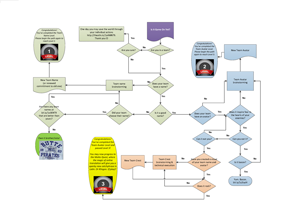If you haven’t heard the term gamification applied to learning experiences you may want to move out from under that rock. While the evidence of effective pedagogical use of games or game-like features is still emergent, education is looking for new ways to engage a generation of learners used to highly visual and immediate interactions with the focus and critical thinking required to develop expertise.
Sounds good, right? And yet there are some significant barriers to integrating game play within a higher education context.
- Nobody likes seeing public funding spend on fun (even though it’s right there, in ‘funding’ :))
- Education is a serious, expensive business and our students/customers have high expectations of standardised and consistent outcomes – achieving full equity for learners across multiple platforms potentially using assistive devices is very challenging.
- Development of game-like processes or systems across a unit or course is really, really expensive.
With large cohorts and a rapidly evolving sector marketplace, how can we use the idea of gamification usefully, cheaply and ethically?
The key lies in why people like games in the first place and it’s something that has long been recognised as one of the most important things in learning.
Feedback.
Gameplay, whether online in VR or across the table during Cribbage, returns instant, constant feedback..Points, health, lives, inventory and locked levels are all used to provide extrinsic and intrinsic motivation and networked activities allow individual or group participation,
Students often experience little formative feedback, with assessments heavily weighted and often at the end of the teaching session. That’s the equivalent of a boss fight without going through the previous levels. Sometimes rules are established through a visible rubric, but in many cases students experience a ‘suck it and see’ approach to something that is, as we said, serious and expensive business.
Game-like features offer learners the opportunity to test their skills and knowledge in an environment that immediately shows the results of their actions. Activities like Flash Cards or short answer questions are easy to create, scaleable, and carry no extra marking load. More complex tools like decision trees or simulations allow higher level thinking skills to develop through produtive failure. Really complex tools like virtual worlds allow situated learning where the capacity to take on a new identity and role lift students out of the classroom and into realistic (or fantastic) scenarios. Leaderboards, badging or competency ratings such as stars reflect learner activity and competence ranking within the cohort.
Most importantly, early and frequent formative feedback exercises build learner confidence. Knowing that they understand the foundational aspects of the unit frees students to extend their focus to broader and deeper areas, avoiding early misconceptions which could impact on learning outcomes. Modern Learning Management Systems usually provide mechanisms for autonomous, asynchconous activities suitable for large scale blended or fully online units, and tutorial or classroom teaching can up the ante with team or individual competition.
Remember feedback works both ways. Check in with your students about what is working for them, and what they’d like to change. Learning analytics can provide data on common student errors, and some systems also allow for adaptive pathways and feedback based on responses. Follow up problem questions and adapt your learning activites to address those gaps. While you can’t always change the what, you can often revise the how.
share the love
